
Review
Sheeted Skin: Alma Allen at Museo Anahuacalli
by Mariana Paniagua
Reading time
6 min
Like the ancient Olmecs, I know Earth is a coiled Serpent. Forty years it’s taken me to enter into the Serpent, to acknowledge that I have a body, that I am a body and to assimilate the animal body, the animal soul. — Gloria Anzaldúa
The exhibition Nunca Solo by sculptor Alma Allen consists of twenty-five pieces of bronze and another of stone. The metallic bodies, which oscillate between medium- and large-scale, give the sensation of having inhabited the volcanic stone compound well before its construction.
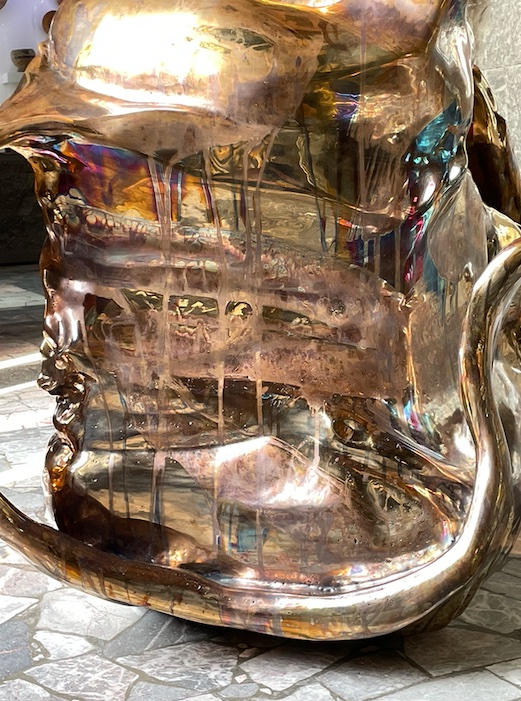
Reflective Skin
Allen’s sculptures wear a temporary, shifting skin that reflects what surrounds them, conditioning their way of existence in this cave that is the museum.
Transparent skin that is all things.
The sculptures appear as immediately as anything surrounding them. The weight of their bodies anchors them, just as their patinated skin projects them outwards while reflecting and changing with the light. This relation of forces is noticeably in tension at the very interior of the sculptures, both in their symbolic figure and in their form.
On the ground floor, in an amber-lit corridor, an anthropomorphic silhouette appears, almost four feet tall:
The presence is a melted figure
its structure has metabolized
each layer of light that has bathed it at five in the afternoon,
and they have settled,
these that now make up its reflective body:
treasured light in the humidity of the dark stone,
dormant memory of the previous afternoon
and the previous one.
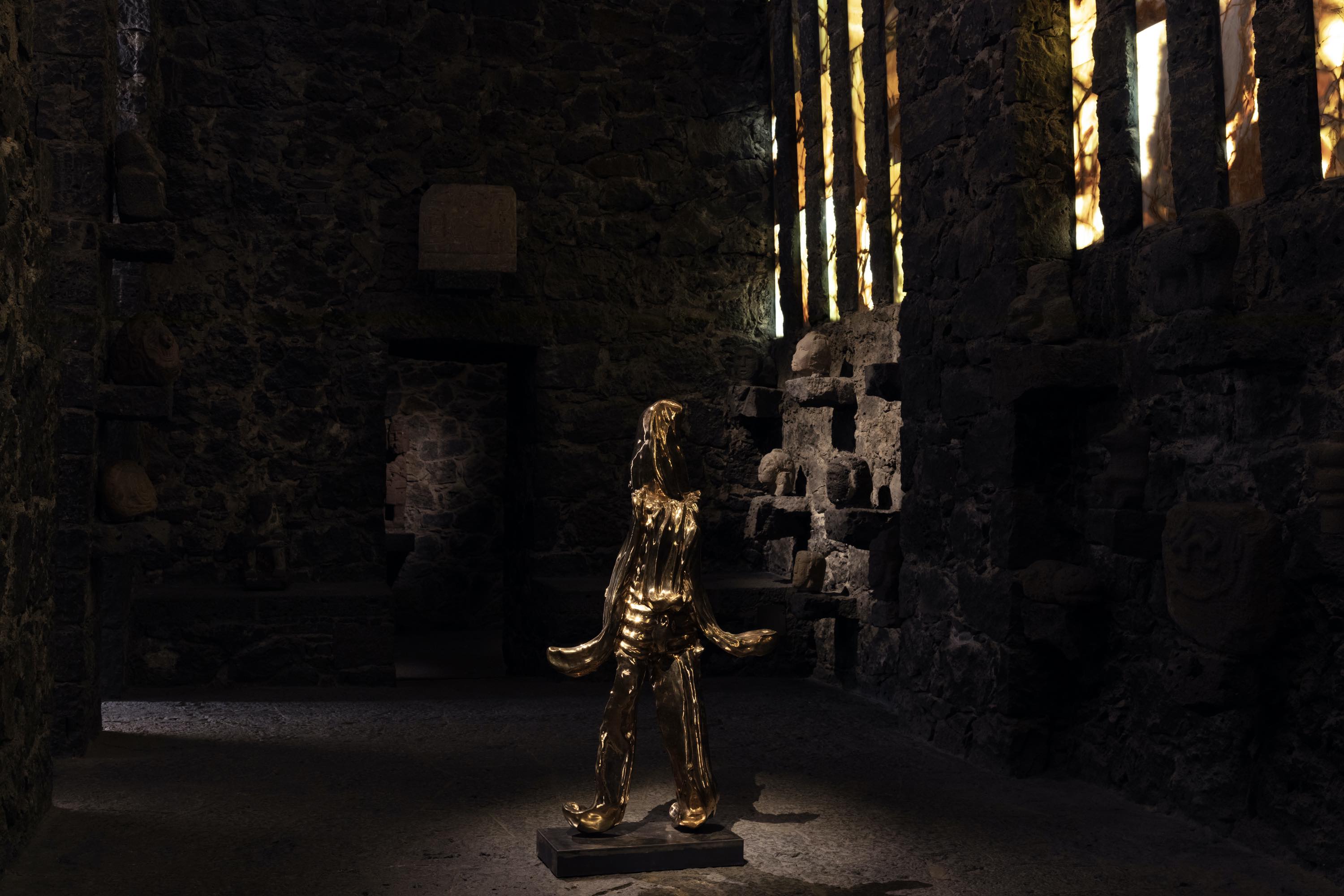
Owing to the quality of reflecting what surrounds them, the pieces wear a shiny surface that is in light and gray in shadow, a holographic stone, a rock phantasm projected atop the sculptures. The space is always acting as the skin of those bodies that cross the limit between one thing and another: between snail and phallus, between ox and a deity emitted from a 3D printer, between marrow and horn, between whale and thorny rose, between the first cuneiform writing tablets and the screen on which I write this text. The edge surrounding the closed notion of the recognizable makes a knot that interweaves the images we have of the world in order to make us feel that everything we have seen has not yet finished enunciating itself.
Transparent Skin
When going through the exhibition, a quality of transparency in the work becomes evident. It seems that one can look through them, within the timeline of their work and of a disorderly historical chronology. In addition to exposing each part of their processes, they enable a spyhole into the imaginations of the distant past and future—temporal spaces that my body is unaware of.
Even in the underworld—damp, cold, and mineral—a robust sculpture rests in the puddle full of coins; it seems to be containing all the expectations that fall on the shoulders of the divinities. It awaits patiently, petrified and golden in what seems to be the deepest hole in the museum.
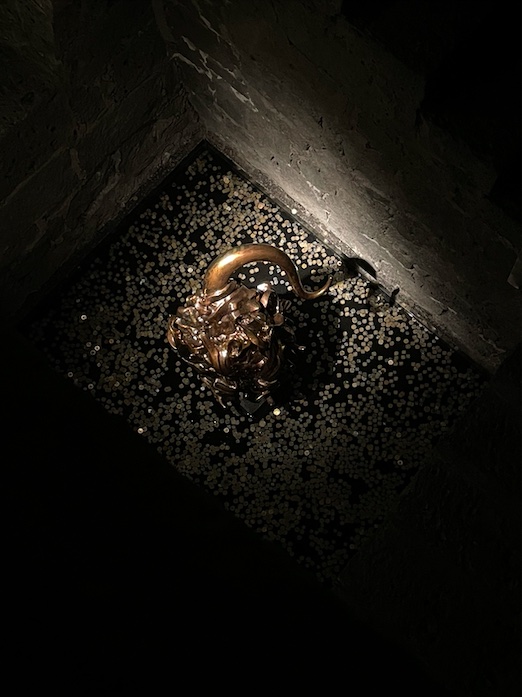
This deity seems not to respond to the qualities of its material, which endow it with the mysticism of a gem. Rather, it gives the impression of having been configured from a virtual line that simulates moldable paste in digital space. Nevertheless, it is placed with all its weight of bronze in this chamber that seems to be more intimate, almost spiritual: the voice there resonates as if we were speaking with our heads inside a large bell, with the last wave of the spoken word followed by a subtle, acid, and metallic sound, highlighting the golden and copper atmosphere in which we are immersed.
On the next level, the atmosphere changes: it seems that the sculptures do as well, since they continue to be modeled while actively participating in their formation by interacting with light, cold, sound, and even with the air.
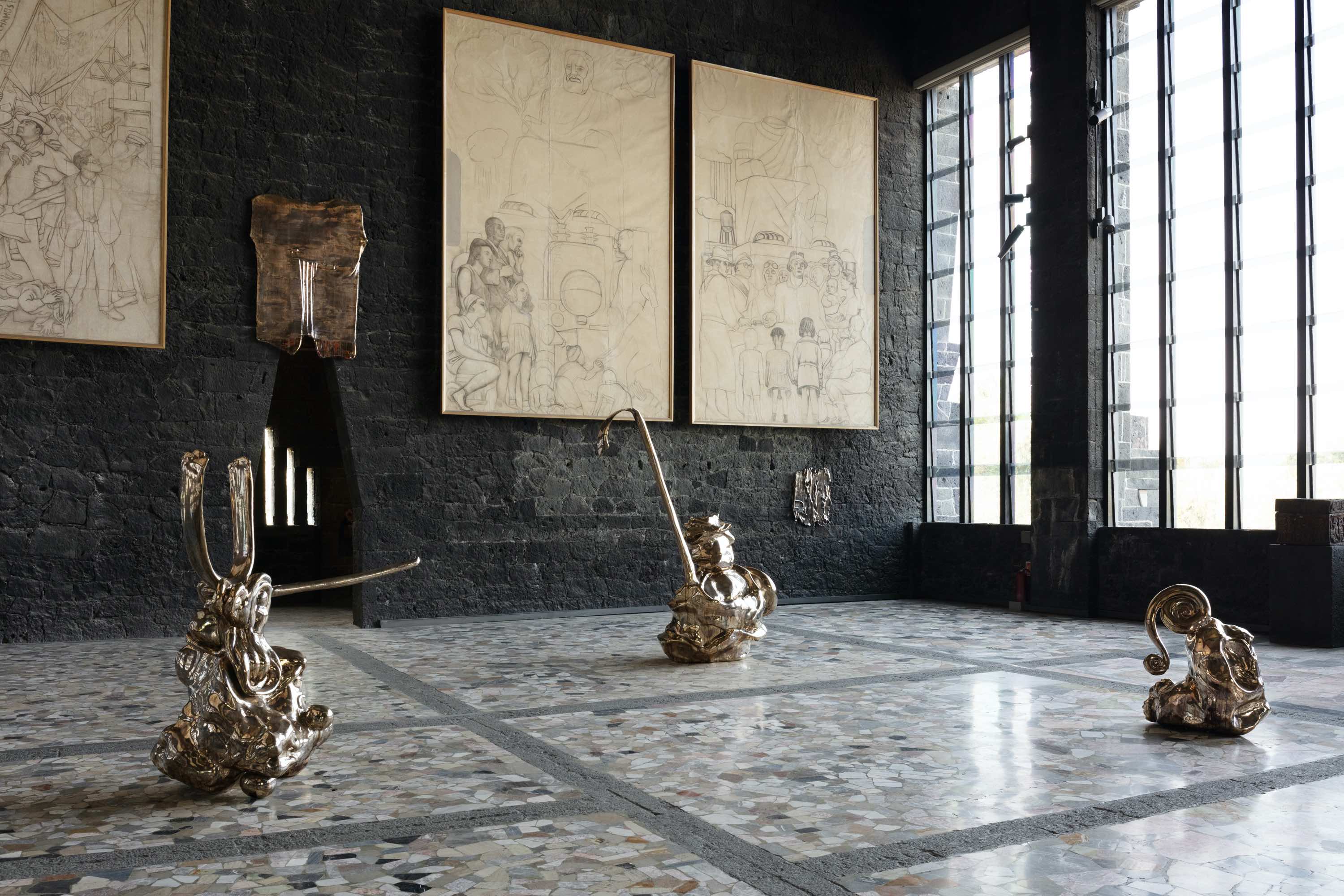
In the background, between two of Diego Rivera’s sixteen sketches, and framing the entrance to the following room, hangs what appears to be an ancient tablet, unearthed in Mesopotamia: dusted off and finally revisited. The support is already almost without traces of the wedge-shaped signs inscribed at that time.
Between 3200 BC, 1932, and 2023, there opens this space in which I have the feeling of being older than I am.
Immediately, projected into the future, a scene appears that seems to be from science fiction, and which could also be a metaphor: a meteorite that contains different forces, each one wanting to go in a different direction, to be a single thing. The only thing that can be distinguished is the struggle of these resistances, both frictional and contained.
Vulnerable Skin
Already following the lowest level of the museum, there is a room with mosaics on the ceiling that seems to mirror the sculpture just below: a porous frog, which may have grown out of sheer moss, stretches its dry amphibian wet tongue towards the mosaic motif above it—a toad.
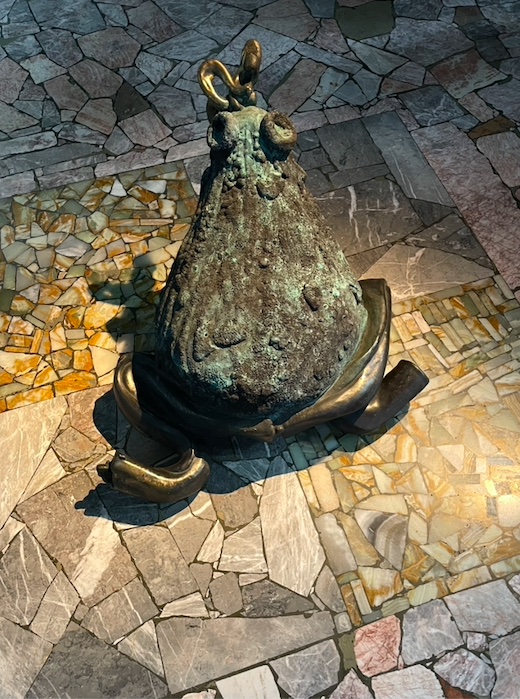
A correspondence that takes place as though it were between a constellation and the one who—from its fibrous eyeballs—contemplates it.
Under this light, both more natural and less enigmatic, the iridescent pieces are visible. I imagine it as a result of the corrosion of the material, through acid patinas that reveal the quality of an opaque, raw sheet with heterogenous color.
Also, features of some Eastern artistic practices are recognized: organic references, watery landscape imagery, air, all at the same time as the figural intention that does not rush to fully define the form.
This idea is reinforced when I read in the information about the works that the title of all of them is Not yet titled, emphasizing the openness of their processes and denoting their resistance to classification.
Constant and sluggish flow of open representation, a rhythm that transits the fissure, calmly and without wanting it to be sutured.
Like a wound on the skin of a living body.
Translated to English by Byron Davies
Published on April 30 2023